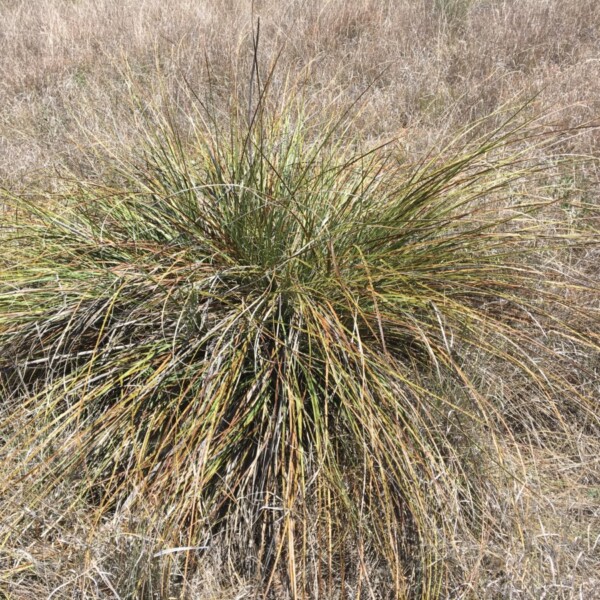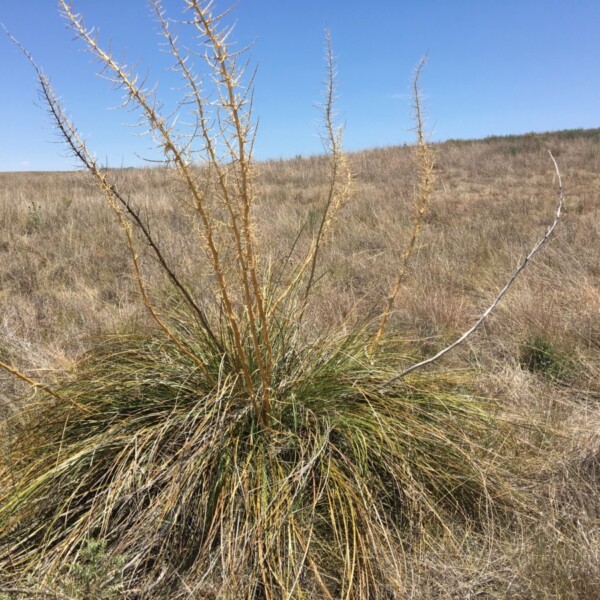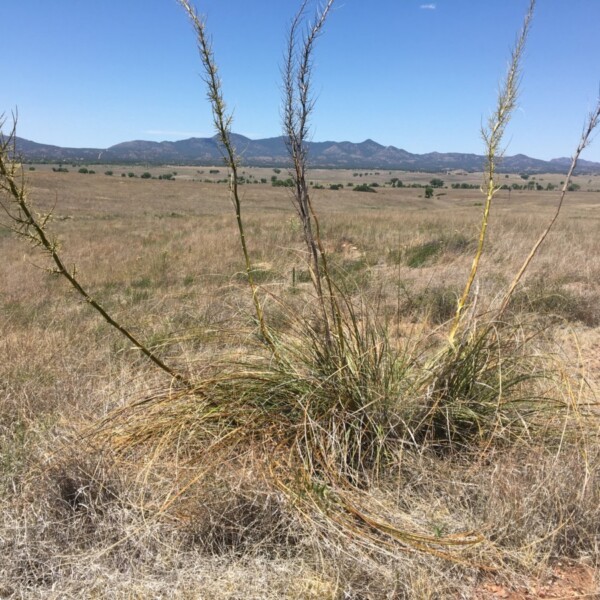I fell in love with bear grass in the gorgeous grasslands of the San Rafael Valley, where our Border Wildlife Study cameras were set up this spring. Bear grass punctuates the Southwest landscape at elevations between 2,700 and 6,500 feet as rosettes up to 6 feet wide with long leaf blades and tall flowering stalks called inflorescences that appear in late spring. It grows across a range of habitats, from evergreen woodlands to desert grasslands. At our study site, it grows taller and is brighter green much of the year than the dry thatch of other plants along the U.S.-Mexico border.
Bear grass, also known by its scientific name Nolina microcarpa, resembles the growth form of its relatives including yucca and agave (Asparagaceae family, subfamily Agavoideae) and shares many of the same values to human cultures by providing fiber for weaving materials. It is occasionally grazed by native ungulates including mule deer and white-tailed deer, however the seeds are reportedly toxic for livestock (Southwest Desert Flora).
When we our installed our Border Wildlife Study cameras in bear grass habitat, we realized that the large clumps of foliage provided excellent camouflage for our equipment. In the subsequent weeks however, we also came to learn that the long leaf blades of bear grass wave dramatically in the valley wind and bear grass caused numerous false triggers of the cameras! Despite the extra photos taken in bear grass habitat, we love this iconic southwestern plant.
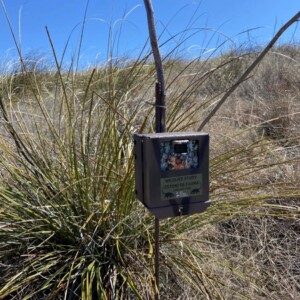
A Border Wildlife Study camera stands against the profile of Nolina microcarpa in the San Rafael Valley.
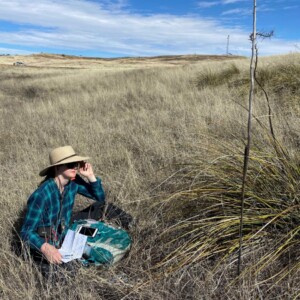
Wildlife Specialist, Meagan Bethel, contemplates how well this patch of Nolina microcarpa will serve as cover for a wildlife camera. In the end, it hid the camera we placed by it well but also caused a lot a false-triggers by waving leaves in front of the lens!


